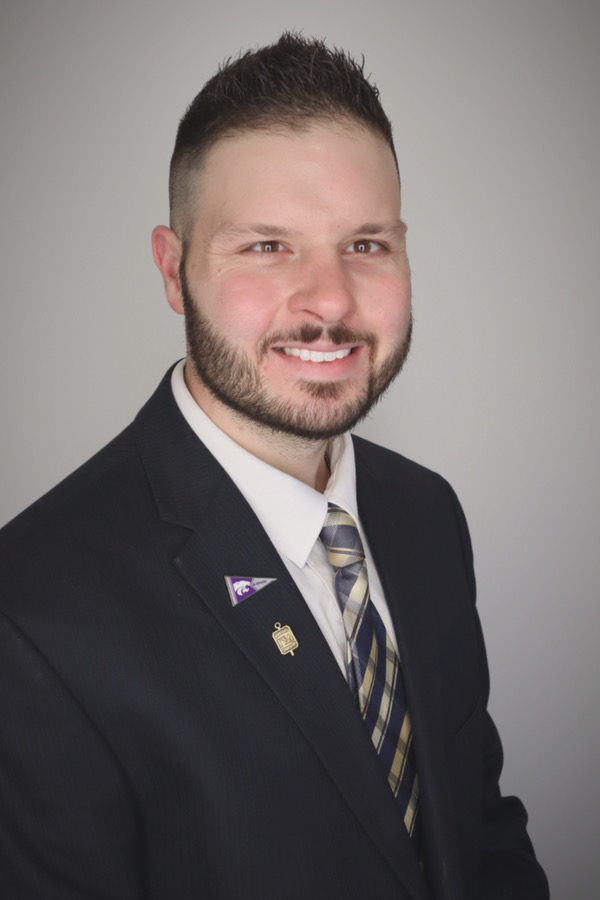- K-State home
- Home
- People
- Logan Simon

Logan Simon
Southwest Area Agronomist
SW Research-Extension Center
4500 E. Mary Street
Garden City, KS 67846-9132
(P) 620-275-9164
Email Logan
Follow Dr. Simon on X (Twitter)
Sign up to receive GROWING POINT: A Southwest Kansas Agronomy eNewsletter
Logan Simon grew up on a diversified crop/livestock farm in Adams County, Illinois 15 miles east of the banks of the Mississippi River, but traveled state-wide as an active member of the Illinois Association FFA (2014 American FFA Degree Recipient). He received his B.S. in Plant Science (2017) from the University of Missouri and his M.S. (2021) and PhD. (2024) in Agronomy from Kansas State University. Dr. Simon joined Kansas State University as an Assistant Professor and Southwest Area Agronomist in 2024. In his extension role, he serves 26 counties in southwest and south central Kansas. Dr. Simon’s applied research program focuses on dryland and limit-irrigated cropping systems for increasing regional productivity, water use efficiency, economic vitality, and environmental sustainability.
Education
PhD in Agronomy, Kansas State University, 2024
MS in Agronomy, Kansas State University, 2021
BS in Plant Science, University of Missouri, 2017
Current Projects
- Cotton: Declining well capacities across southwest Kansas and the High Plains have forced many producers to reassess crop selection for their irrigated acreage. One strategy that could stabilize irrigated acreage as well as on-farm economic returns and potentially reduce the rate of aquifer depletion is the incorporation of more drought tolerant crops like cotton. Cotton production and ginning in Kansas has exceeded 2.4 million bales since 1996. Significant infrastructure investments have been made in Kansas cotton including the establishment of four gins in Moscow, Pratt, Anthony, and Winfield.
- Forages: Locally grown forages are vital feed ration ingredients for southwest Kansas feedlot and dairy operations. These operations play a pivotal role in the United States’ agricultural landscape but face significant threats amid declining Ogallala Aquifer groundwater levels and increasing impacts of climate change on forage production. Climate-smart, sustainable forage production systems will be essential for maintaining regional economic viability and prosperity.
- Cover crops: Integrating cover crops into no-tillage dryland cropping systems has been recommended to regenerate soil properties diminished after many years of conventionally-tilled low-intensity crop production in the High Plains. Integrated crop-livestock systems where CCs are grazed by ruminant livestock, usually beef cattle could balance goals of short-term profitability and long-term sustainability of agricultural production
- Soil fertility and tillage: Long-term no-tillage can result in soil nutrient stratification and acidification of the soil surface with long-term use of ammonium-based fertilizers. Stratification increases nutrient susceptibility to losses by water and wind erosion, and acidification of the soil surface may decrease nutrient availability or increase nutrient toxicity risks. Liming as well as strategic or occasional tillage of long-term no-tillage systems are potential amelioration strategies.
- Integrated weed management: The widespread evolution of herbicide resistance in weed populations has become an increasing concern for no-till farmers in southwest Kansas and the High Plains. Without effective chemical control options for problematic broadleaf (kochia and Palmer amaranth) as well as perennial grass (tumble windmillgrass, tumblegrass, and purple three-awn), farmers are looking for alternative control options. Fallow replacement with forage/cover crops as well as strategic/occasional tillage of long-term no-tillage systems may be components of such integrated weed management programs.